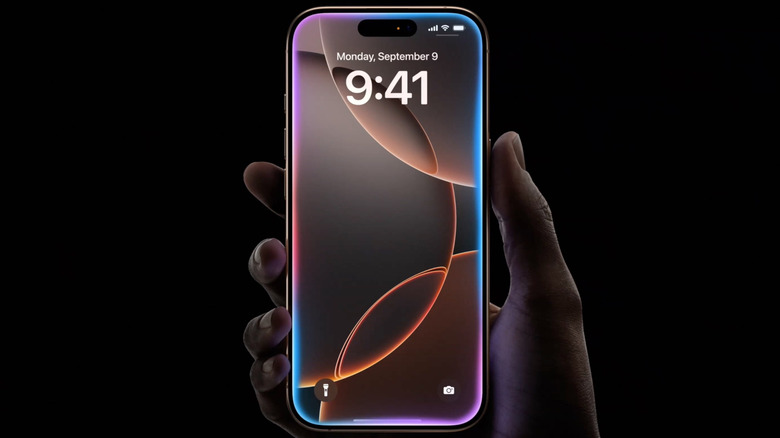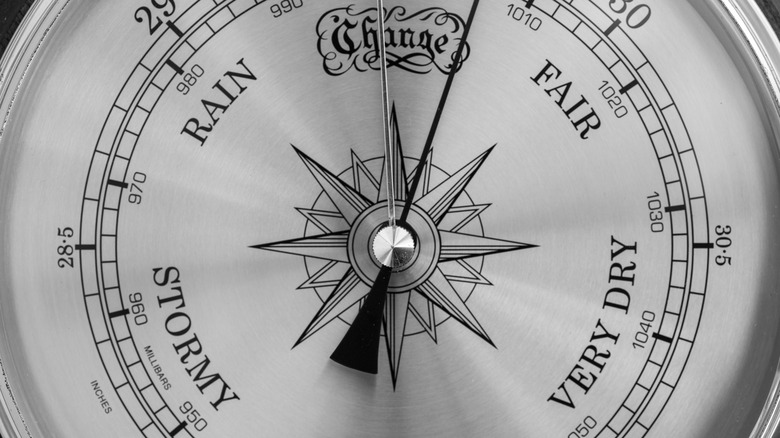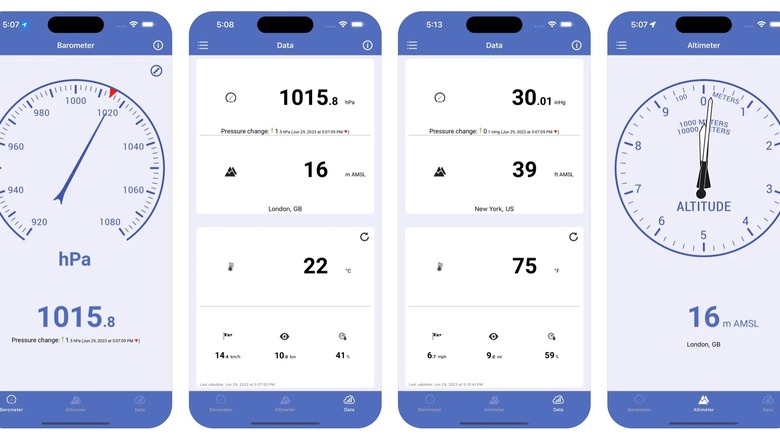Why Does The iPhone Have A Barometer? (And How To Use It)
For many in the tech arena, the iPhone has been, and likely always will be, the gold standard for handheld mobile devices. The smartphones were the very definition of "game changer" when they debuted in 2007, and they have continued to evolve into some of the most technologically advanced devices on the consumer electronics scene in the years since.
These days, the iPhone has become such an advanced piece of tech that it tends to have lots of features and functions installed that many users don't even know about. With the list of hidden iPhone features only seeming to get longer with every new iteration of IOS, it's likely that some users will never fully grasp what their devices are actually capable of. Even as Apple continues to build new functions into the iPhone, a few have been around for a while now, though you still may not know about them.
For example, did you know that your iPhone has a barometer built into it? Apple's iPhones have boasted a built-in barometer since the device's sixth generation. As for why the Apple design team began incorporating barometers into the smartphones, it's likely because a barometer can help provide the device with better readings for vertical location, which greatly improves the iPhone's GPS capabilities. So, how exactly does a barometer aid in that particular endeavor?
What do barometers actually do?
If you are wholly unfamiliar with what a barometer does, the devices are designed to measure atmospheric pressure, which is sometimes called barometric pressure, hence the name. The devices have long been utilized by scientists and meteorologists, as changes in atmospheric pressure tend to coincide with changes in the weather. Historically, those devices have functioned with the aid of mercury, as the metal fluid is directly impacted by the amount of pressure in the air, though fluid-less aneroid barometers have also been utilized regularly.
Don't worry, you don't have a tube of mercury or an aneroid chamber built into your iPhone. Barometers went digital long ago, and the readings taken from digital sensors built into your iPhone are far more accurate and immediate than those taken by the old school instruments. If you're curious how they take readings, the barometer is one of the reasons there are vents in the bottom of your iPhone, as the design feature allows air to enter the device for readings.
As for what the barometer in your iPhone is measuring, it, in part, uses the change in pressure to chart the device's change in elevation, since air pressure can shift dramatically the higher or lower you are in the world. The barometer in your iPhone may be so sensitive that the readings shift by moving from the first floor of a home to the second. Readings from the barometer can also be used by certain weather and health-monitoring apps if you give permission for them to access that information.
Accessing your iPhone's barometric readings
Now that you know your iPhone has a barometer and is regularly charting the changes in atmospheric pressure depending on where you are in the world, you might be wondering how you can access this information. Unfortunately, it does not appear that you can directly access the information on your iPhone yourself. In fact, searching "barometer" on your device will produce exactly zero results.
That means you'll need to visit ye old App Store and download a third-party feature if you want to tap into the barometric potential of your iPhone. As a reminder, the barometer did not debut in the iPhone until the sixth generation models made it to market. So, if you're using an iPhone 5 or earlier, you will not be able to access the info because, well, there just won't be any info to access. The good news is that, assuming you are using a barometer-equipped iPhone, there are several third-party apps to choose from in the App Store.
Among the higher-rated free apps you'll find are the Barometer & Altimeter & Thermo from ExaMobile S.A. and My Altitude from Dayana Networks Ltd., which each boast a 4.8 stars out of 5 rating with more than 8,000 and more than 25,000 user reviews, respectively. The apps offer many of the same free features, with each offering in-app upgrades at a cost, meaning that the differences are primarily aesthetic. But if you're interested, My Altitude does allow users to utilize barometric readings from NOAA instead of those taken directly by your iPhone, though there's no guarantee of which numbers will be more accurate.


